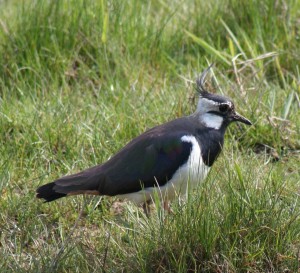Short Reflection (15th September 2013 at Essex Church / Kensington Unitarians)
When I was about 20 years old, in a Secret-Santa present exchange one Christmas, I let it be known amongst my old schoolfriends that I would like to get a book about birds. I’ve no idea what brought about this urge at that particular moment in my life. I do recall having fond memories of studying a wall-chart that mum had bought me as a child so that I could identify the birds that came to visit our caravan on holiday in Kent each year. In fact I’ve managed to dig out the wall-chart which set me on the path to being a birdwatcher.
That Christmas, the Secret Santa came good, and I pored over the beautiful book I’d been given, amazed at the variety of birds to be found in this country (most of which I’d never heard of, let alone seen). I started to wonder where they had all been hiding. I was about to go away for a snowy New Year’s break at a cottage in the countryside and packed the book to take with me. Soon after I arrived, I noticed an insistent call coming from the tree outside my bedroom window. I remember pulling back the curtains to be greeted by a large-ish, pigeon-ish, bird and thinking “Hello, who are you?” (This phrase still pops into my head whenever I see or hear a new bird, or even a rustle in the undergrowth, and if nobody else is around I have been known to say it out loud to the bird in question). I consulted my bird guide and found it was a collared dove. This was thrilling news – a bird I had never met before – and even now I find it exciting to meet a new bird for the first time. It turns out that collared doves are pretty common and they have a repetitive coo-ing that can drive you quite crackers when they are perched in a tree outside your bedroom window… but that didn’t matter at the time.
In the early days of my life as a birdwatcher I knew so few birds that I found myself happily tripping over new species everywhere. I remember being especially grateful for ducks – generally large birds, rather hard to miss, which stay still long enough for you to focus your binoculars – and a colourful treat during the winter months when they migrate here from colder places in great numbers. I had never considered the possibility that there might be ducks other than mallards to think about… but soon I had been introduced to gadwall, pintail, wigeon, and many more beautiful wild species. Along with my mum, I’ve always had a fondness for small birds, finches and tits like the ones on my wall-chart, and although some of these will obligingly come to a garden bird-feeder, others are more of a challenge to spot, being small, fast-moving, and often quite secretive. And there are a whole class of birds that birders jokingly refer to as ‘little brown jobs’ – warblers and the like which might only differ minutely in plumage or song – and which lurk infuriatingly in reeds or bushes. However, as I have got deeper into it, I find the challenge of working birds out is enjoyable in its own way. And birding has taken me to all sorts of places as I have travelled the country visiting different habitats to seek out local specialities.
In some people’s minds, birdwatching is a nerdy pursuit, a form of collecting like trainspotting that is just about getting another ”tick” on the list. There is an element of that, of course, especially when it comes to the hardcore twitchers who devote their time and money to pursuing rare species. But, for me, birdwatching is about slowing down and paying attention. To identify a wild bird, especially from just a fleeting glance, you have to cultivate the habit of careful looking and listening. When you encounter a bird, you have to care about them enough to say “hello, who are you?”… and then you have to stay put long enough to get to know them and find out. And you have to do it on their terms. If you carelessly galumph into their habitat, shouting at the top of your voice, wearing bright colours, the birds will most likely scatter and the bushes around you will be silent and lifeless. The first time you encounter a bird you will probably need to focus on the details and check your field guide again and again… but with persistence, in time, you will become more familiar with each species, building up a relationship of sorts, and eventually you may be able to recognise those birds from just a glimpse, like you would an old friend. You may become increasingly aware that there is all this life out there, all these creatures with their daily struggles, which you simply didn’t see before you started trying to recognise and name them. You may find yourself more intuitively in tune with changes in the whole ecosystem and landscape – that interdependent web of which we are a part. Through birdwatching – just slowing down and paying attention – you may find that you have forged a new, deeper, relationship to your fellow creatures, and that some of them really can be called your feathered friends.
Reflection by Jane Blackall
An audio recording of this reflection (and the rest of the birds service) is available:

